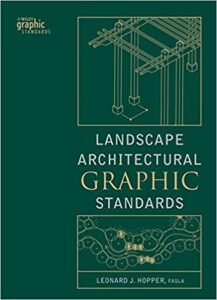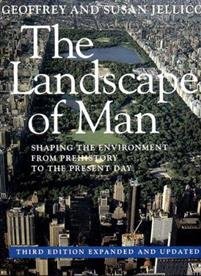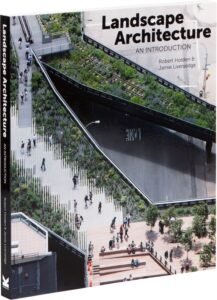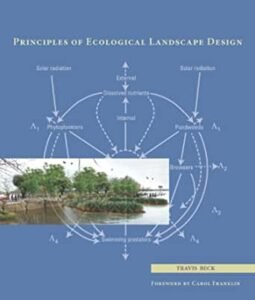The wisest way to procure knowledge is by learning the art of reading, the right literature, and prose. Reading stimulates the right side of the brain dedicated to creative thinking, visualization, and imagination, which nowadays ceases to exist due to lack of interest. For correct interpretation of written words, a person should communicate well, for which needs the act of avid reading first, as it helps to form words for writing, indirectly helping in the formation of words while speaking.
Focusing the attention towards “Landscape Architecture Books”, I would like to list down the most preferred reads in the respective field. The landscape is a major specialization in Architecture as a profession, which particularly deals with the design of well-integrated design of outdoor and indoor spaces and public design. But in this field of study, the number of information related is in a vast volume, making it necessary to chow down to a few basic and important books.

-
Design with Nature – Ian L. McHarg
How can anything related to landscape architecture doesn’t start with Ian McHarg? He has the past half-century of landscape architecture dedicated to him. Ian was the forefather being the first in the profession to preach symbiotic design, keeping nature in context. The most influential book written by him was “Design with Nature” in 1969, which catered a step-by-step approach on breaking down a land region into ways in which it could be used at its most efficiency. Rooting to ancient landscape architecture philosophies, he thought radically opposite to the prevailing urban-industrial modernity calling it Dominating and Destructive in the times when Modernism failed miserably.

-
Landscape Architectural Graphic Standards – Leonard J. Hopper
Earning the title of being the “Bible” of landscape architecture is this book which represents the work of more than 100 authors. It provides the basic rule of thumb and standards used throughout combined with an enormous compilation of texts and detailed diagrams to refer to at your fingertips. It aims to bridge the gap between theory and practice, thus leading to be an essential read for students and enthusiasts of landscape architecture.

-
Landscape Graphics – Grant Reid
The only book to refer to for excellent hand-drawn graphics is this one by Grant Reid. Due to the domination of CAD-based software nowadays, the importance of hand-drawn graphics is fading away leading to unawareness of the fundamental hand-rendered illustrations. It is a classic industry instructive reference that represents an easy-to-master graphic technique, that helps in encouraging skillsets that are generally used in the profession. To ease the process of understanding, it is been drafted in black-white graphics as the language of graphic communication is impossible to be covered in one domain.

-
Landscape Design: A Cultural and Architectural History – Elizabeth Rogers
To understand the historic perspectives of landscape architecture this book is an encyclopedic account of manmade landscapes around the world. It provides a comprehensive resource along with illustrations and pictures that do ample justice to the text. It considers the interaction of human evolution and land revelation. It spans from developments of societies, to how cities, parks, and gardens try to inculcate cultural values of that area.

-
The landscape of man- Geoffrey Jellicoe and Susan Jellicoe
This book offers global perspectives of past and present landscapes, inclusive of all genres from gardens to urban and regional landscape in two large volumes, that divides all the information into three civilizations i.e. Central (Mesopotamian), Eastern (India, China), and Western (Egypt) to cover deep insights on the landscape of 28 varied cultures. It tries to portray how the environment is conditioned by the philosophy and religion of each civilization along with physical arts arising from expression, architecture, and landscape.

-
Landscape Architecture – Jamie Liversidge and Robert Holden
This book particularly aims at prospective students in landscape architecture, as it gives a comprehensive introduction and overview of the nature and practice of landscape architecture. It describes the skills and techniques needed and the latest developments in the field, along with design principles from concept to reality. It touches on the techniques for project and landscape management along with the background of sustainability.

-
Digital Drawing for Landscape Architecture – Bradley Cantrell and Wes Michaels
A digitized, full-color contemporary version of this book bridges analog and digital representation methods by comparative methods, to help students enhance their design with digital media. Each chapter demonstrates different techniques, to explore the design on various levels through computer rendering graphics. This book is a great resource for enthusiasts wanting to improve their rendering skills through software.

-
Principles of Ecological Landscape Design – Travis Beck
The base of this book starts with ecologists and is a culmination of a long process of thought and discovery. Travis attempts to link the subject of landscape to the composition, structure, function, and organization of landscapes directly to ecologically sustainable processes. Its topics range from Plant selection and Biogeography, coexistence, biodiversity, integration with other organisms, plant-animal interactions, etc, making it interesting to read from different perspectives.

-
The Social Life of Small Urban Spaces – William H. Whyte
A 1980s classic in an attempt to document the dynamic human interactions that inhabit them through various urban experiments to detail out the strategy to make great cities. It was also converted to a film; both being launched to make a mini-revolution in the planning and study of public spaces. Thus, have been labeled standard texts, and appear on syllabi and reading lists in urban planning, sociology, environmental design, and architecture departments around the world.

-
The Planting Design Handbook- Nick Robinson
A definitive text on landscape architecture courses is this handbook of planting design. It covers a wide range of experts in planting and the immediate environment. As humans consciously interfere with the vegetation in their surroundings creates an astonishing design with different types of plants. Leading away to grab hands over this book which book hosts clear illustrations that detail the ecological, horticultural, and aesthetic aspects of varied ranges of plants. Thus, making a standard to refer for better design approaches.
The richness reading provides is unparallel to any dimensions and so is this list of essentials and basics to understand the landscape profession as a whole. This list is not the limit. But is a good way to start learning about this profession as a headstart.



